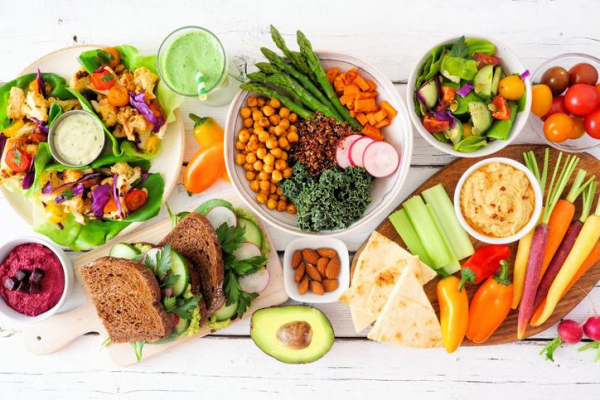
Winter hiking: Magical or miserable?

By midwinter, our urge to hibernate can start to feel constricting instead of cozy. What better antidote to being cooped up indoors than a bracing hike in the crisp air outdoors?
Winter backdrops are stark, serene, and often stunning. With fewer people on the trail, you may spot more creatures out and about. And it’s a prime opportunity to engage with the seasons and our living planet around us, says Dr. Stuart Harris, chief of the Division of Wilderness Medicine at Massachusetts General Hospital. But a multi-mile trek through rough, frosty terrain is far different than warm-weather hiking, requiring consideration of health and safety, he notes. Here’s what to know before you go.
Winter hiking: Safety first
“The challenge of hiking when environmental conditions are a little more demanding requires a very different approach on a winter’s day as opposed to a summer’s day,” Dr. Harris says. “But it gives us a chance to be immersed in the living world around us. It’s our ancient heritage.”
A safety-first attitude is especially important if you’re hiking with others of different ages and abilities — say, with older relatives or small children. It’s crucial to have both the right gear and the right mindset to make it enjoyable and safe for all involved.
Planning and preparation for winter hikes
Prepare well beforehand, especially if you’re mixing participants with vastly different fitness levels. Plan your route carefully, rather than just winging it.
People at the extremes of age — the very old or very young — are most vulnerable to frigid temperatures, and cold-weather hiking can be more taxing on the body. “Winter conditions can be more demanding on the heart than a perfectly-temperatured day,” Harris says. “Be mindful of the physical capabilities of everyone in your group, letting this define where you go. It’s supposed to be fun, not a punishing activity.”
Before setting out:
- Know how far, high, and remote you’re going to go, Dr. Harris advises, and check the forecast for the area where you’ll be hiking, taking wind chill and speed into account. Particularly at higher altitudes, weather can change from hour to hour, so keep abreast of expectations for temperature levels and any precipitation.
- Know if you’ll have access to emergency cell coverage if anything goes wrong.
- Always share plans with someone not on your hike, including expected route and time you’ll return. Fill out trailhead registers so park rangers will also know you’re on the trail in case of emergency.
What to wear for winter hikes
Prepare for extremes of cold, wind, snow, and even rain to avoid frostbite or hypothermia, when body temperature drops dangerously low.
- Dress in layers. Several thin layers of clothing are better than one thick one. Peel off a layer when you’re feeling warm in high sun and add it back when in shadow. Ideally, wear a base layer made from wicking fabric that can draw sweat away from the skin, followed by layers that insulate and protect from wind and moisture. “As they say, there’s no bad weather, just inappropriate clothing,” Dr. Harris says. “Take a day pack or rucksack and throw a couple of extra thermal layers in. I never head out for any hike without some ability to change as the weather changes.”
- Protect head, hands, and feet. Wear a wool hat, a thick pair of gloves or mittens, and two pairs of socks. Bring dry spares. Your boots should be waterproof and have a rugged, grippy sole.
- Wear sunscreen. You can still get a sunburn in winter, especially in places where the sun’s glare reflects off the snow.
Carry essentials to help ensure safety
- Extra food and water. Hiking in the cold takes serious energy, burning many more calories than the same activity done in summer temperatures. Pack nutrient-dense snacks such as trail mix and granola bars, which often combine nuts, dried fruit, and oats to provide needed protein, fat, and calories. It’s also key to stay hydrated to keep your core temperature normal. Bonus points for bringing a warm drink in a thermos to warm your core if you’re chilled.
- First aid kit. Bandages for slips or scrapes on the trail and heat-reflecting blankets to cover someone showing signs of hypothermia are wise. Even in above-freezing temperatures, hypothermia is possible. Watch for signs such as shivering, confusion, exhaustion, or slurring words, and seek immediate help.
- Light source. Time your hike so you’re not on the trail in darkness. But bring a light source in case you get stuck. “A flashlight or headlamp is pretty darn useful if you’re hiking anywhere near the edges of daylight,” Harris says.
- Phone, map, compass, or GPS device plus extra batteries. Don’t rely on your phone for GPS tracking, but fully charge it in case you need to reach someone quickly. “Make sure that you have the technology and skill set to be able to navigate on- or off-trail,” Harris says, “and that you have a means of outside communication, especially if you’re in a large, mixed group.”
About the Author

Maureen Salamon, Executive Editor, Harvard Women's Health Watch
Maureen Salamon is executive editor of Harvard Women’s Health Watch. She began her career as a newspaper reporter and later covered health and medicine for a wide variety of websites, magazines, and hospitals. Her work has … See Full Bio View all posts by Maureen Salamon

Is the portfolio diet the best diet ever?

News flash: What we eat can play a pivotal role in warding off — or treating — disease and enhancing quality of life. You may already believe this, and certainly mounting evidence supports that idea. But on the cluttered shelf of diets claiming top health benefits, which one ranks as the absolute best?
That’s a trick question. In fact, there is no single best diet. A good diet for me may be different from what’s best for you. And for either of us, there may be several good choices with no clear winner.
How can you choose the right diet for you?
When thinking about what diet might be best for you, ask yourself:
- What goals are most important? A goal might be weight loss, improved health, avoiding disease, or something else.
- How do you define “best”? For some people, best means the diet with the highest number of health benefits. For others, it may focus on one specific health benefit, such as lowering cholesterol. Still other people may prefer a diet that delivers the greatest benefit for the lowest cost. Or a diet that is healthy and also easy to stick with.
- What health problems do you have? One diet may have an advantage over another depending on whether you have cancer, cardiovascular disease, diabetes, or none of these.
- Which foods do you like best? Your tastes, culture, and location may shape your dietary preferences, and powerfully affect how likely you are to stick with a specific diet.
Which diets are high in health benefits?
Two very well studied diets demonstrate clear benefit, including lowering risk for heart disease and stroke and reducing high blood pressure: the Mediterranean diet and the DASH diet.
But the portfolio diet may be as good as or better than these plans, at least for combatting cardiovascular disease that contributes to clogged blood vessels, heart attacks, and stroke. What? You’ve never heard of the portfolio diet? You’re not alone.
What is the portfolio diet?
Just as a financial advisor may recommend having a diverse investment portfolio — not just stocks, not just bonds — the portfolio diet follows suit. This largely plant-based diet focuses on diverse foods and food groups proven to lower harmful blood lipids, including LDL (so-called bad cholesterol) and triglycerides.
If you choose to follow this eating pattern, you simply need to learn which foods have a healthy effect on blood lipids and choose them in place of other foods. For some people, this only requires small tweaks to embrace certain foods while downplaying other choices. Or it may call for a bigger upheaval of longtime eating patterns.
Which foods are encouraged in the portfolio diet?
Below are the basics. Eating more of these foods regularly may help lower levels of harmful blood lipids:
- plant-based proteins such as soy, beans, tofu, peas, nuts, and seeds
- high-fiber foods such as oats, barley, berries, apples, and citrus fruit; other examples include bran, berries, okra, and eggplant
- phytosterols, which are a natural compound in plant-based foods such as whole grains, fruits, vegetables, and nuts (other sources are foods fortified with phytosterols or dietary supplements)
- plant-based oils high in monounsaturated fat such as olive oil, avocado oil, safflower oil, and peanut oil.
See? Some of your favorite foods make the cut. That’s a major strength of this approach: the list of recommended foods is long. So, it’s likely that you’re already eating and enjoying some of the recommended foods.
Which foods are not part of the portfolio diet?
It’s worth highlighting foods that are not on this list, such as
- red meat
- highly processed foods
- refined grains and added sugar, which may contribute to chronic inflammation
- butter, cream, and other dairy products high in saturated fat and cholesterol.
What can the portfolio diet do for you?
Researchers have shown that the portfolio diet can improve blood lipids. But can it also lower the risk of heart attack, stroke, and other cardiovascular problems?
Yes, according to a 2023 study published in Circulation. More than nearly 17,000 people kept careful food diaries for 30 years. Those who most closely followed the portfolio diet, compared with those who followed it the least, were more likely to have favorable lipids and inflammation. They were also 14% less likely to have a heart attack, and 14% less likely to have a stroke.
This was true even after accounting for factors that could affect cardiovascular disease risk, such as taking cholesterol-lowering medications, exercise, smoking, or having diabetes or a family history of cardiovascular disease.
Because this was an observational study, it can’t conclusively prove that the portfolio diet, rather than another factor, was responsible for the observed cardiovascular benefits. And we don’t know how much benefit came from reducing or eliminating certain types of foods, rather than from the specific foods eaten.
Does the portfolio diet help people lose weight or deliver other health advantages?
What about the portfolio diet for weight loss? Although some people lose weight on the portfolio diet, it’s not billed as a weight-loss diet. Understanding its potential benefit for other conditions such as obesity, cognitive decline, diabetes, and cancer awaits further research.
Go beyond diet to boost health
Of course, diet is not the only way to improve cardiovascular health and your overall health. You’ll stay healthier by
- not smoking
- getting regular exercise
- maintaining a healthy blood pressure and weight
- preventing diabetes when possible, or getting good medical care to treat it if necessary
- taking prescribed medications such as cholesterol-lowering drugs.
The bottom line
It’s probably best to move past the idea of there being a single best diet. The overall pattern of your diet and your portion sizes are probably more important. For most people, it’s also a good idea to move away from restrictive diets that are nearly impossible to stick with and toward healthier overall eating patterns. The portfolio diet checks both those boxes.
There’s a lot of overlap between the portfolio diet and other healthy diets. So, no one should be suggesting it’s the best diet ever. But if you’re trying to eat healthier, it’s a great place to start.
About the Author

Robert H. Shmerling, MD, Senior Faculty Editor, Harvard Health Publishing; Editorial Advisory Board Member, Harvard Health Publishing
Dr. Robert H. Shmerling is the former clinical chief of the division of rheumatology at Beth Israel Deaconess Medical Center (BIDMC), and is a current member of the corresponding faculty in medicine at Harvard Medical School. … See Full Bio View all posts by Robert H. Shmerling, MD